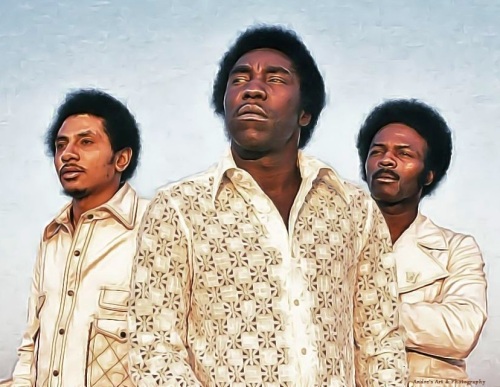Isaac Hays, born in Covington, Tennessee in 1942 was raised by his grandparents. He was encouraged to finish high school several years after dropping out due to the encouragement of his teachers. After turning down musical scholarships from several universities, Hayes began performing in the late 50’s as a teenager. By the mid 1960’s, he and David Porter became one of the major songwriting partners at Stax. Especially for the duo Sam & Dave. His solo debut Presenting Isaac Hayes wasn’t a big success in 1968. But its jazzier orientation pointed in a vital new direction for his music.
By that time, Stax was in trouble. Otis Redding had died with most of the original Bar Kays in a plane crash. And Atlantic Records had absorbed most of their back catalog. As a label functioning with no music, label owner Al Bell decided to have its remaining artists to record 27 new albums to give Stax new content. Hayes’s sophomore album Hot Buttered Soul was the most successful in 1969. Its extended, jazzy and psychedelic treatments of his own songs and interpretations became his signature sound. Even through his record breaking 1971 soundtrack for Shaft.
With Shaft, Hayes had basically created the production template for the disco era. That was elongated dance songs with heavy string and horn orchestration’s. As the disco era arrived in earnest, Hayes mid to late 70’s albums swam right along with the tide his earlier 70’s works had initiated. Not to mention his continuing soundtrack work for movies like Truck Turner and Three Tough Guys. As similar artists like Barry White ascended to popularity, some of Hayes’ albums got lost on the musical public. One of them was an album with an amazing title song entitled “Joy”.
A 7 hit drum beat (with plenty of hi hat around the middle) starts off the song at an approximately 80 BPM’s-which continues throughout the rest of the song. Then the snaky bass and distant seeming wah wah guitar accents chime in. From there, the strings rise up in volume right into the song-spiraling horn charts in the back round. A sustained organ swirl also joins the mix. A bluesy fuzz guitar plays to Hayes’s vocals. On the b section of the chorus, the melody gets a bit higher key with the orchestration. The song fades out with a long,grunting extended refrain.
At almost 16 minutes, “Joy” is one of those early 70’s funk operas. It actually reminds me a little bit of Barry White’s “I’m Gonna Love You Just A Little More Baby” from the same year. Its among the faster of Hayes’ usual extended ballad approach of the earlier 70s. Still, Hayes’ distinctive psychedelic and jazz tones keep this distinct as cinematic soul/funk was becoming more the mainstream at the time. And its for that reason that its actually one of my favorite Hayes’ solo numbers along with “Theme From Shaft”, “Groove-A-Thon” and his epic version of “Walk On By”.


